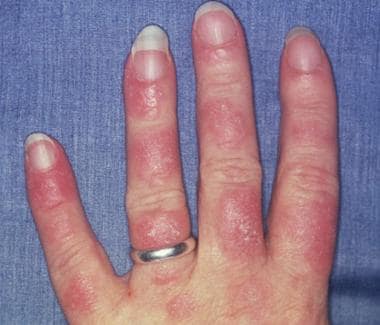Symptoms of SLE

When examining a person's skin, it is important to look for the cutaneous manifestations of SLE. These manifestations include four diagnostic criteria and several other clues. The first is a rash, which may be pruritic and persistent. In addition, the patient may also experience photosensitivity. Some patients may also experience plaque-like lesions or discoid rashes. Finally, in rare cases, scarring can also occur.
Fatigue
Fatigue is the most common symptom of SLE, accounting for up to 80% of the patient population. It is an unpleasant symptom with no definite cause and is unrelated to the disease's activity level. The fatigue severity scales of SLE patients are similar to scores for patients with other chronic illnesses, but they are significantly higher than those for the general population. Because of this, fatigue is a significant cause of morbidity in SLE and can lead to reduced quality of life, decreased work ability, and healthcare costs.
Arthralgias
Arthralgias is one of the symptoms of SLE, which is an autoimmune disease. Symptoms of SLE may begin abruptly, with fever and malaise, or may develop gradually over months or years. Severe cases may result in vascular headaches, epilepsy, renal toxicity, or organ involvement.
Weight changes
Patients with active SLE may experience weight loss and a general feeling of ill health. The weight changes can be due to corticosteroid therapy, disease activity, or a secondary condition. Myocarditis and nephrotic syndrome may also contribute to weight gain or loss. The most common initial clinical presentation of SLE is joint pain. The pain may be asymmetric or disproportionate to swelling.
Thromboembolic disease
Thromboembolic disease symptoms are common in SLE patients and should be investigated as a potential cause. While the incidence of this complication was relatively low in the current study, studies have suggested that SLE patients are more likely to develop thrombotic events than the general population. Moreover, these complications often occur at younger ages. For example, a recent Manzi and colleagues study found cardiovascular thrombosis was more common in young SLE patients than in the general population. In addition, young women were twice as likely to be hospitalized with thrombosis than the general population.
Skin manifestations
The skin is a common site for SLE symptoms. About half of SLE patients will develop a malar rash. It occurs over the cheeks and nasal bridge and often develops after exposure to the sun. This rash is not a distinctive symptom of lupus but may appear months or years before the onset of the disease.
Heart involvement
The cardiovascular system is one of the most frequently affected organs in patients with SLE. More than 50% of lupus patients will experience cardiac involvement. Despite this, the pathophysiology of cardiac involvement is still unknown. However, certain factors should be considered when evaluating cardiac involvement in SLE.



